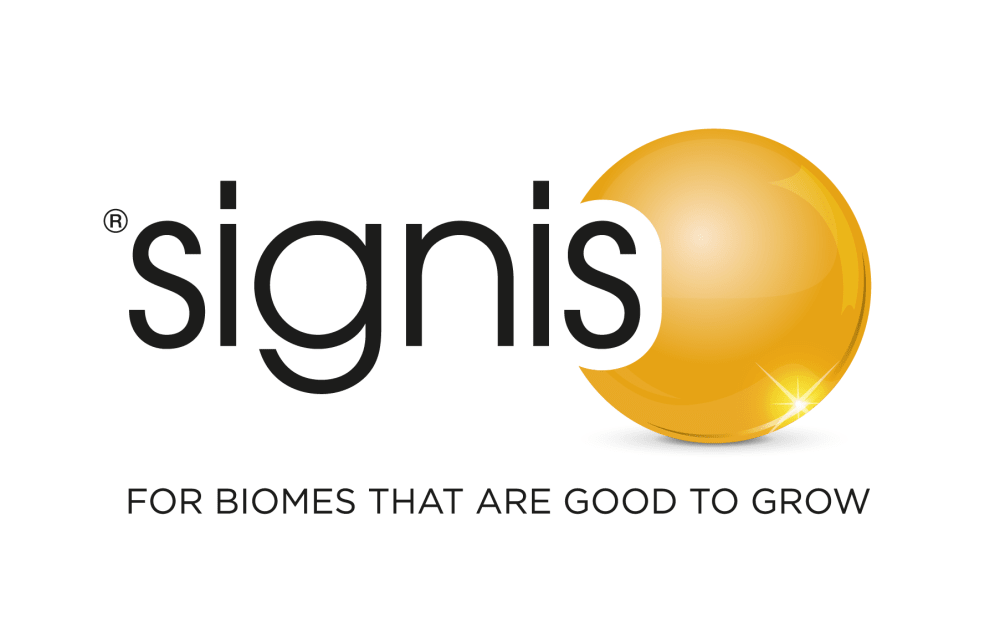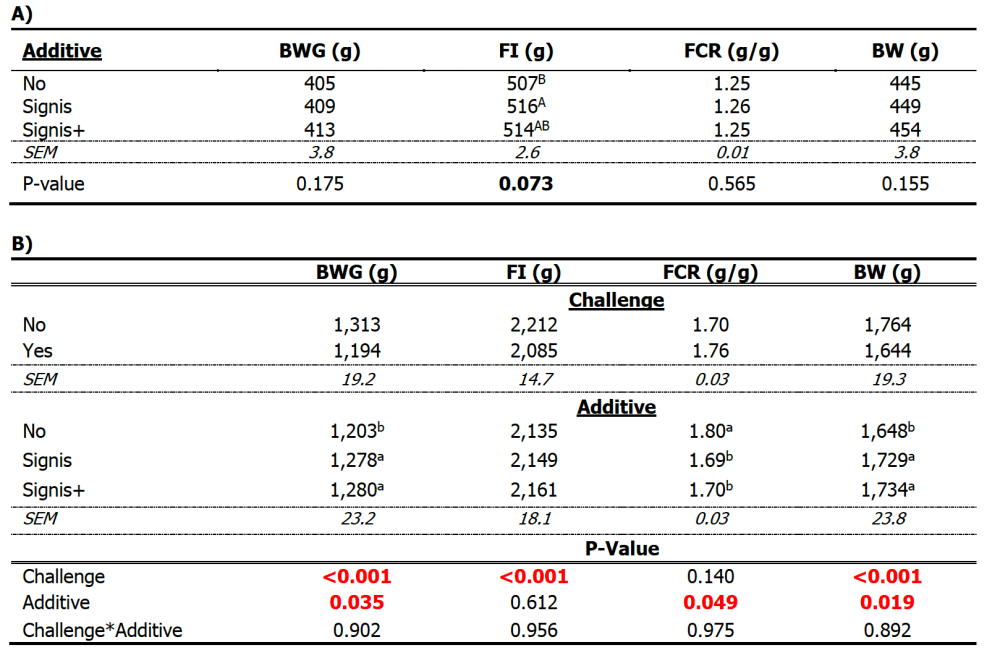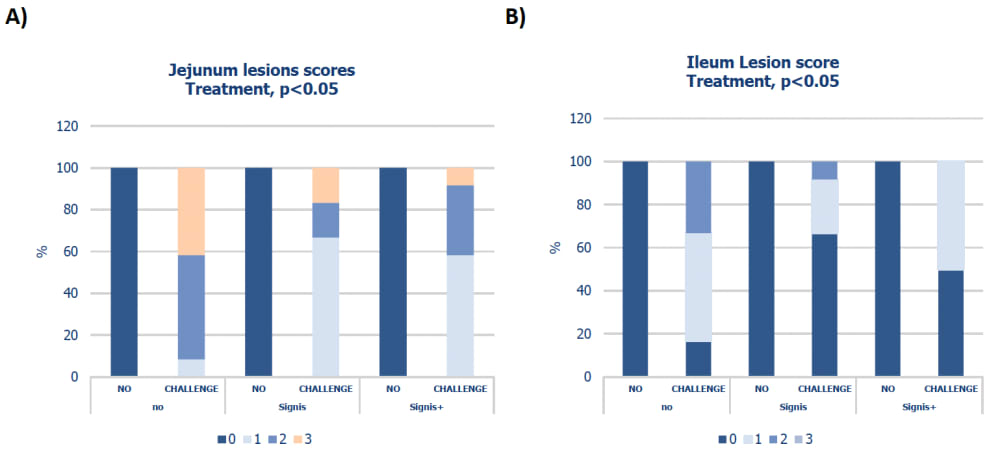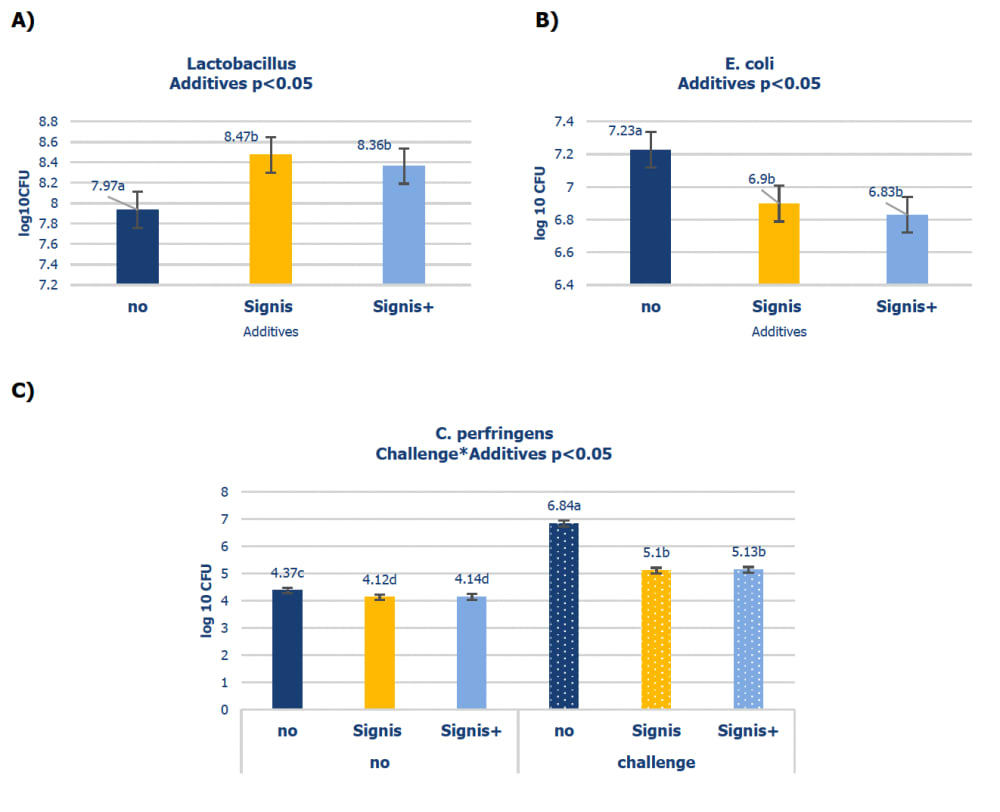Signis improves performance and gut resilience of broilers fed a corn-based diet under necrotic enteritis challenge
Published Wednesday, 19th April 2023By Xavière Rousseau, Global Poultry Technical Manager, AB Vista

Gut health has a significant impact on the health and wellbeing of an animal and consequently its growth, performance and overall productivity. If the gut health of the bird is compromised, it can lead to poor digestion and nutrient absorption, gut integrity damage, energy losses and dysbiosis.
Gut function in monogastrics is associated with the absorption of nutrients in the upper gut while the lower gut works as a fermentation chamber, where the concentration of microbiota is higher. Stimulating the lower gut to ferment fibre creates a better environment for beneficial bacteria and improves the innate immune system, while the production of such fermentation also brings beneficial effects to the animal’s health and nutritional status.
Supplementing an animal’s diet with a stimbiotic stimulates fibre fermentation in the lower gut. This results in increased production of volatile fatty acids (VFAs) such as butyrate, which is locally used as a source of energy for enterocytes, which improves gut integrity, serves as an energy source for the host animal and stimulates the growth and activity of beneficial bacteria.
In a recent trial involving corn-fed broilers in South Korea, supplementation of stimbiotic Signis was shown to mitigate the harmful effect of a necrotic enteritis (NE) challenge on intestinal integrity and function and improve overall performance.
Trial design
The trial involved 72 one-day old Arbor Acres broilers from a hatchery in Asan, South Korea. After a pre-trial assessment to determine the most efficient challenge model, the birds were randomly split into six different groups, with three different dietary treatments applied to their basal diets:
- Control - No additives included in the diet
- Diets supplemented with 100g per ton of Signis
- Diets supplemented with Signis plus prebiotics, probiotics, essential oil and yeast mannan (Signis+)
The NE challenge was applied twice a day at 18d, 19d and 20d, while the no challenge birds were administered a buffer solution. They were all housed in floor pens until 21 days, and then moved to cages until day 30. The animals were weighed at housing, before the challenge and at 30 days, and the feed intake was recorded on the same days for the feed conversion calculation.
The objective of the challenge was to evaluate the impact on performance, inflammatory response, intestinal lesions, footpad health, blood profile and caecal bacteria in the challenged birds.
Results
The NE challenge negatively affected the growth performance and gut morphology of the birds, evidenced by a reduction in feed intake (FI), body weight gain (BWG) and feed conversion ratio (FCR). However, the implementation of both additive strategies mitigated this reduction in performance – resulting in increased FI, BWG and FCR – with the results showing no benefit of the inclusion of further additives to the feed (Signis+) than purely Signis alone (Table 1).
Table 1: Effect of the challenge and/or additives supplementation on the growth performance of broilers from A) 0 to 14d and B) from 15 to 30 days
Animals from the control group had a decrease in villus height (VH) and increase in crypt depth (CD), resulting in a decreased VH:CD ratio – with a clear negative effect on gut integrity. In contrast, birds fed diets supplemented with Signis or Signis+ saw an increase in villus height and no significant impact on crypt depth, thus a better VH:CD – highlighting the association between gut integrity and animal performance.
The trial also assessed the effect of each treatment on intestinal lesions (Figure 1). While the control group saw an increase in lesions, there was a reduction in lesions in both the jejunum and ileum in birds receiving diets with the feed additives. Furthermore, these same birds also reported significantly better footpad health than those in the control group – but again, very little difference was seen between using Signis+ and Signis alone.
Figure 1: Effect of the dietary treatments in a non-challenge and necrotic enteritis challenge conditions on A) jejunum and B) ileum lesion scores
Looking at the blood profile of challenged birds, there was a clear increase in inflammatory markers (TNF-alpha and endotoxins) for the control group, which was demonstrably mitigated by the feed additive treatments, resulting in a positive knock-on effect on gut integrity and function. No further benefits were observed by the inclusion of other additives beyond those obtained by Signis inclusion.
Finally, the trial assessed caecal content for specific bacteria (Figure 2). Birds whose diets were supplemented with Signis or Signis+ showed an increase in the abundance of Lactobacillus bacteria in the caecum and significantly reduced potential pathogenic bacteria (E. coli. and C. Perfringens) to a similar degree (indicating a good moderation of the caecal microbiome).
Figure 2: Effect of additives supplementation on ceacal count of (A) Lactobacillus spp., B) E. coli and C) Clostridium perfringens
 Conclusion
Conclusion
Overall, the results show that supplementing diets with Signis improves the resilience of the gut under a NE challenge. This effect was observed by the reduction of the inflammatory response and improved the performance of NE challenged birds. Under these conditions, Signis alone was as effective as a typical blend containing several other additives. Signis can therefore serve as a nutritional strategy to mitigate the detrimental effects of NE challenge and potentially replace blends of other additives with higher cost.
Ensuring good gut integrity and functionality should be a primary objective for producers to achieve a productive flock. Adding a stimbiotic such as Signis to your feed action plan can offer significant benefits across the board. This includes better nutrient digestibility, optimised gut function, increased energy utilisation and improved resilience and liveability – leading to optimal animal performance and lower production costs.
Latest news
Stay ahead with the latest news, ideas and events.

Online Feed Fibre Calculator
Calculate the percentage of dietary fibre in your feed
Our calculator is designed for nutritionists and uses averages of global raw materials to calculate the dietary fibre content (plus other more in-depth fibre parameters) of finished animal feed. These parameters are available within AB Vista’s Dietary Fibre analysis service (part of our NIR service).
Sign up for AB Vista news
A regular summary of our key stories sent straight to your inbox.
SUBSCRIBE© AB Vista. All rights reserved 2025
Website T&Cs Privacy & Cookie Policy Terms & Conditions of Sale University IDC policy Speak Up Policy



























